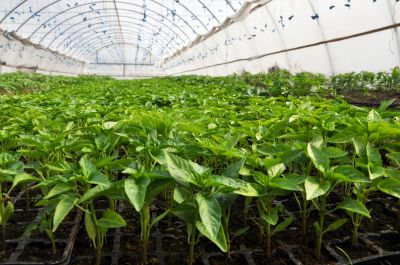Products For Greenhouse Installations
 Setting up a greenhouse involves selecting the right products to ensure optimal functionality and durability. From structural frameworks to climate control systems, each component plays a vital role in creating a suitable environment for plant growth. When choosing products for greenhouse installations, it's important to consider factors such as material quality, ease of assembly, and compatibility with existing structures. Properly selected equipment and accessories can enhance the longevity and efficiency of your greenhouse, making it a productive space for gardening or small-scale agriculture.
Setting up a greenhouse involves selecting the right products to ensure optimal functionality and durability. From structural frameworks to climate control systems, each component plays a vital role in creating a suitable environment for plant growth. When choosing products for greenhouse installations, it's important to consider factors such as material quality, ease of assembly, and compatibility with existing structures. Properly selected equipment and accessories can enhance the longevity and efficiency of your greenhouse, making it a productive space for gardening or small-scale agriculture.
Top Overall Option
Durable Greenhouse Frame System
A sturdy and versatile framing system designed for easy assembly and long-term use, suitable for various greenhouse sizes and styles. Its corrosion-resistant materials and modular design allow for customization and expansion, making it a reliable foundation for any greenhouse project.
Types of Products For Greenhouse Installations
Greenhouse Framing Materials
Includes aluminum, galvanized steel, and PVC options that provide structural support and durability.
Covering Materials
Polycarbonate panels, glass panes, and polyethylene films that control light and insulation.
Ventilation Systems
Automatic vents, exhaust fans, and louver systems to regulate airflow and temperature.
Heating Equipment
Heaters, heat mats, and thermostats designed to maintain optimal growing temperatures.
Lighting Solutions
Grow lights and supplemental lighting to extend daylight hours and support plant growth.
Irrigation Systems
Drip irrigation, misting systems, and automatic watering controllers for efficient watering.
Shade Cloths
Materials that provide adjustable shading to prevent overheating and manage light exposure.
Environmental Controls
Digital controllers and sensors for monitoring humidity, temperature, and CO2 levels.
Shelving and Storage
Durable shelving units and storage solutions to organize plants and tools efficiently.
Foundation Anchors
Secure anchoring systems to stabilize greenhouse structures on various terrains.
Flooring Options
Gravel, concrete, or paver flooring to provide a stable and clean surface inside the greenhouse.
Popular Choices
Durable and lightweight panels offering good light transmission and insulation.
Devices that automatically open and close vents based on temperature changes.
Heating units with built-in thermostats to maintain consistent temperatures.
Energy-efficient lighting options that support plant growth during low light periods.
Complete systems for efficient and uniform watering of plants.
Adjustable fabrics to control sunlight exposure and prevent overheating.
Systems that automate temperature, humidity, and lighting adjustments.
Fans designed to improve airflow and remove excess heat or humidity.
Sturdy shelving to maximize space and organize plants efficiently.
Secure anchoring solutions for stable greenhouse setups in various terrains.
Affordable and flexible covering material suitable for DIY greenhouse projects.
Systems for collecting and utilizing rainwater within the greenhouse environment.
Motorized screens that adjust shading based on sunlight intensity.
Systems that add moisture to the air to support humidity-sensitive plants.
Portable and compact options for small-scale or specialized plant growth.
Greenhouse structures can vary widely, from simple kits suitable for hobbyists to large-scale setups designed for commercial use. The foundational elements often include framing materials like aluminum or galvanized steel, which provide strength and resistance to corrosion. Covering materials such as polycarbonate panels, glass, or polyethylene films are crucial for controlling light transmission and insulation. Additionally, climate management tools like ventilation systems, heating units, and shade cloths help maintain a stable environment within the greenhouse.
Installing reliable watering systems and automation devices can significantly reduce manual effort and improve plant health. Features like drip irrigation, misting systems, and digital controllers allow for precise regulation of watering schedules and environmental conditions. Lighting solutions, including grow lights, extend the growing season and support photosynthesis during shorter daylight hours. Overall, the integration of these products into a cohesive setup can make greenhouse management more efficient and enjoyable.
Selecting the right products requires careful planning and consideration of your specific needs, space constraints, and budget. Whether you are building a small hobby greenhouse or a large commercial operation, the right combination of products can make a substantial difference in your gardening success. Investing in quality components and accessories ensures that your greenhouse remains functional and productive for years to come.
Key Buying Considerations
- Determine the size and scale of your greenhouse project to select appropriately sized products.
- Assess the climate conditions and choose products that offer suitable insulation and ventilation features.
- Material durability and resistance to corrosion are important for long-term use.
- Ease of assembly and compatibility with existing structures can save time and effort.
- Compatibility of covering materials with framing systems ensures structural integrity.
- Automation options like climate controllers and automatic vents can enhance efficiency.
- Energy consumption and efficiency of heating and lighting equipment should align with your budget.
- Consider the ease of maintenance and cleaning of products to ensure ongoing performance.
- Budget constraints may influence the choice between higher-end and more affordable options.
- Availability of replacement parts and customer support can impact long-term satisfaction.
- Flexibility for future expansion or modifications can be advantageous for growing needs.
- Safety features, especially for electrical and heating equipment, are essential.
- Environmental factors such as wind load and snow load capacity should be considered in structural choices.
- Ensure products meet local building codes and regulations if applicable.
- Read product reviews and seek recommendations to gauge reliability and performance.
